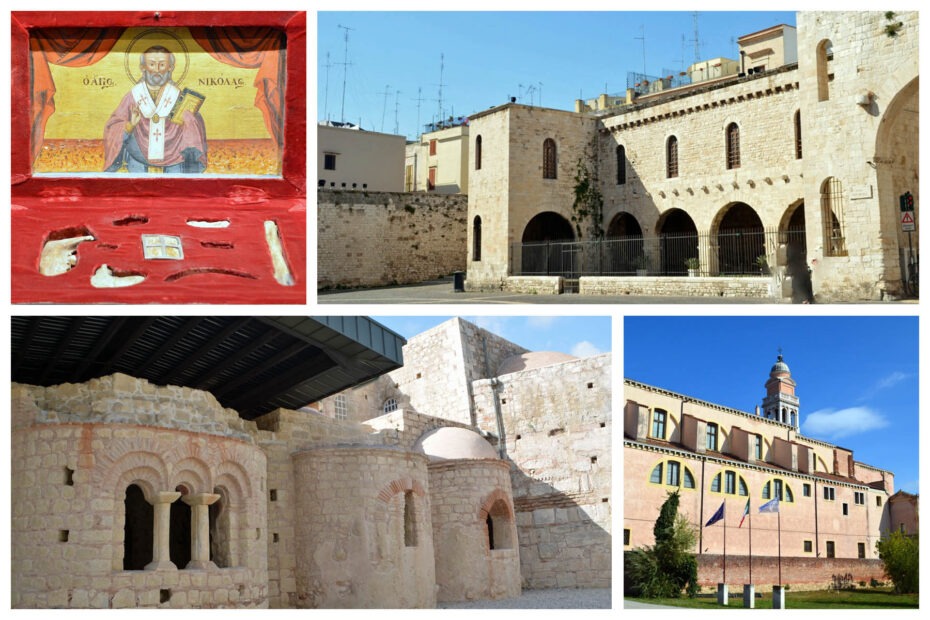Media in France have publicized new developments concerning Saint Nicholas and his part of the festivities of Christmas, as his feast day is on 6th December. It may have already been of concern for this bishop born in the 4th century to have become assimilated with the rotund figure of Father Christmas (more about this transformation later), but even this is now being questioned. In order to make Christmas more inclusive and make sure no one is offended by the religious context!, Saint Nicholas has now morphed again. He can be known as Sidi Nicolas (rather than Saint) and there was a plan in Gand (Belgium) to have a black woman representing him to make sure there were no racist or sexist intentions by showing him as a white male. I gather the plan has now be abandoned…
Would this be enough for the saint to turn over in his grave? Well, he is not in his grave anymore, anyway. Read on!
who was Saint Nicholas?

The data concerning his life are scant and contested as a legend has grown around his persona. We know that he was born circa 270 in Anatolia in a Christian family but his parents died during a plague epidemic. His uncle was bishop. Persecutions against Christians only ceased after 313 when the emperor Constantine published the Edict of Milan which allowed Christians to practise their religion. It is thought that Nicholas was imprisoned and tortured before this date.
How he became a bishop is unclear. In one version, bishops had gathered one evening in the church at Myra in order to choose a new bishop to replace Nichaolas’s uncle who had just died. As they were praying, an apparition told them to choose Nicholas. In another version, they had decided that they would elect whoever turned up first at the church door the next morning. The net result anyway was that he did become a bishop.
The rest of his life was devoted to his sacerdotal duties. He died on 6 December 343 and was given a marble tomb.
Saint Nicholas as a Figure of the early church
As a bishop, he attended the Council of Nicea in 325. This council condemned Arianism, which did not recognise the divine nature of Christ. It is said that Nicholas actually slapped Arius, proponent of this doctrine. Arius was exiled but continued preaching outside the boundaries of the Roman empire. One of his disciples, Wulfila, converted the Germanic tribes, which added a religious element to the barbarian invasions and was only resolved several centuries later when the Arians finally accepted Roman catholicism.
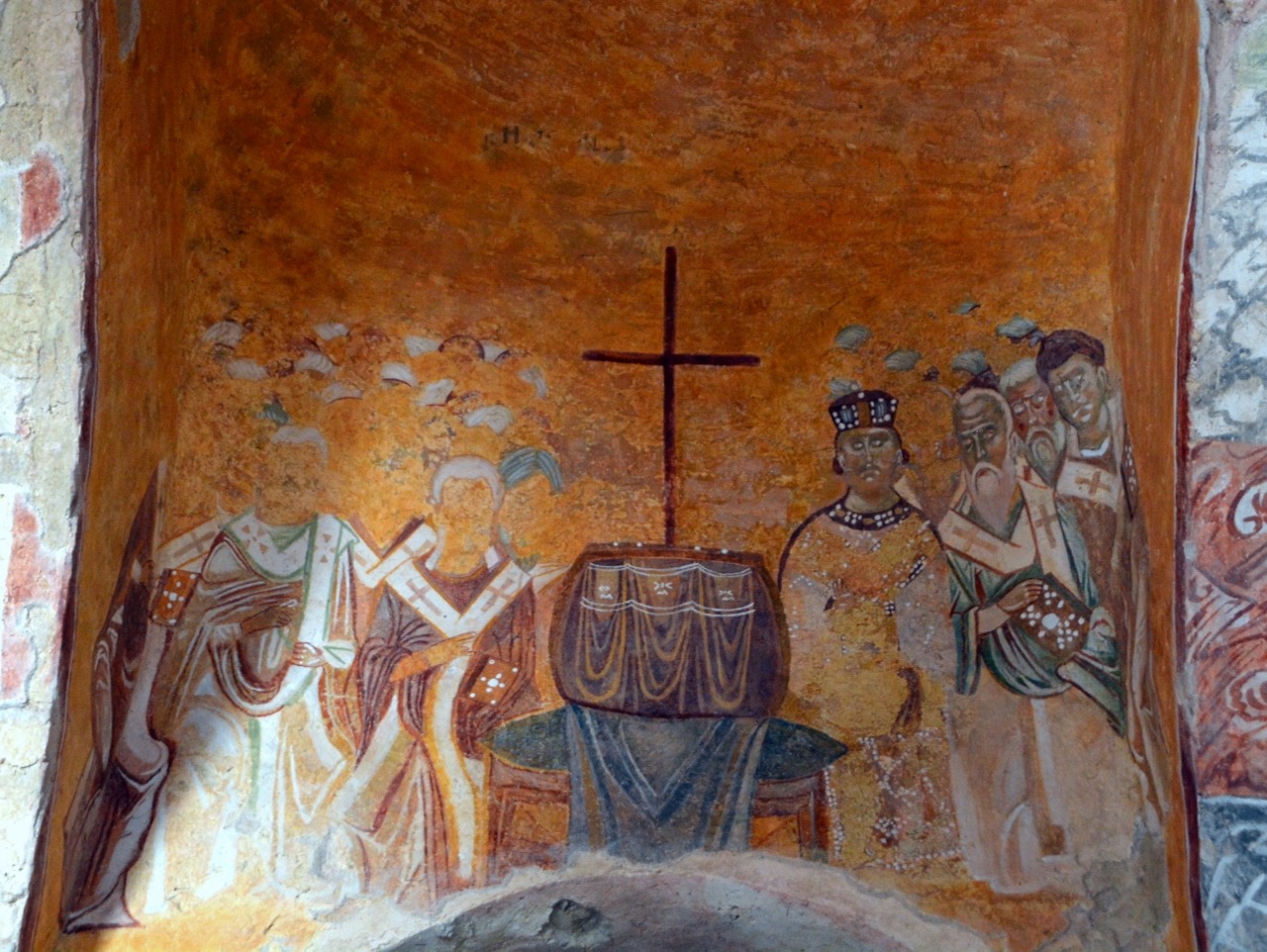
The miracles of Saint Nicholas
There is a long list, with many variants, so I’ll only mention a few.
The three poor maidens
In Patara, near Myra, a father was too poor to provide a dowry for his three daughters and there was a risk they would have to turn to prostitution in order to survive. The saint took pity on the three young women and gave each of them some gold coins they could use as a dowry. On paintings, the coins are often represented as golden balls. In some versions, the money is slipped in through a window, in others, the saint brings it down the chimney (hence a possible link to Father Christmas).
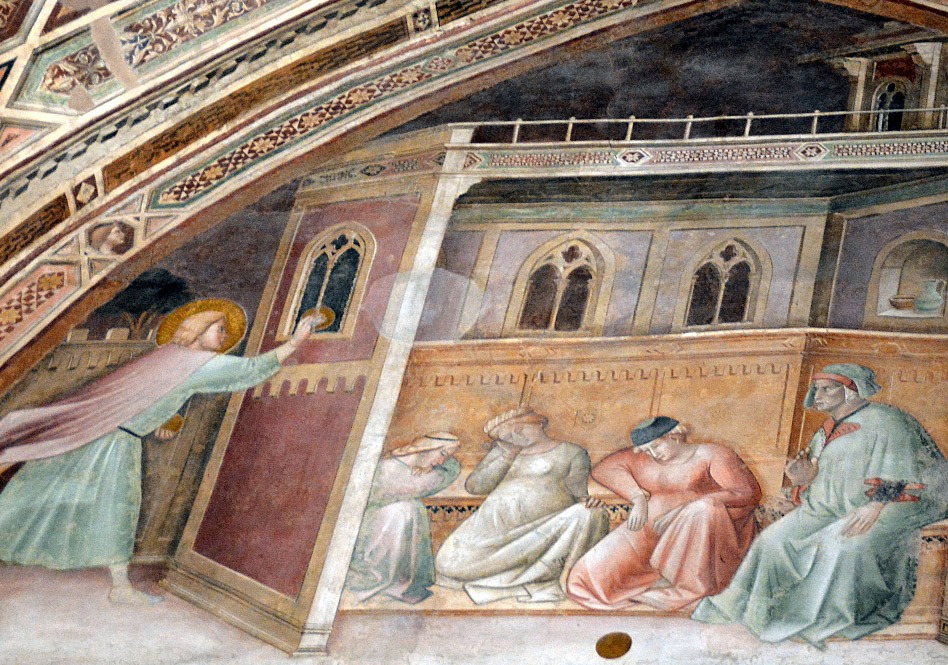


The golden cup
A childless man desired a son. He prayed to the saint and promised to give him a beautiful golden cup, specially crafted, if his wish was granted. A son was born, but the father decided to keep the cup for himself and had an inferior one made instead which he intended to give to Nicholas. He then set off with his son and the two cups. While they were crossing a river the child, who was holding the original cup, fell into the water and drowned. The father was devastated but decided to continue his voyage. When he met the saint, he gave him the second inferior cup. However an invisible hand threw the cup away and the father was thrown onto the floor. This happened several times until the saint reappeared holding the young boy, still clutching the orignal cup, by the hand. He had saved the child from drowning. Ashamed, but relieved, the father then gave both cups to the saint!
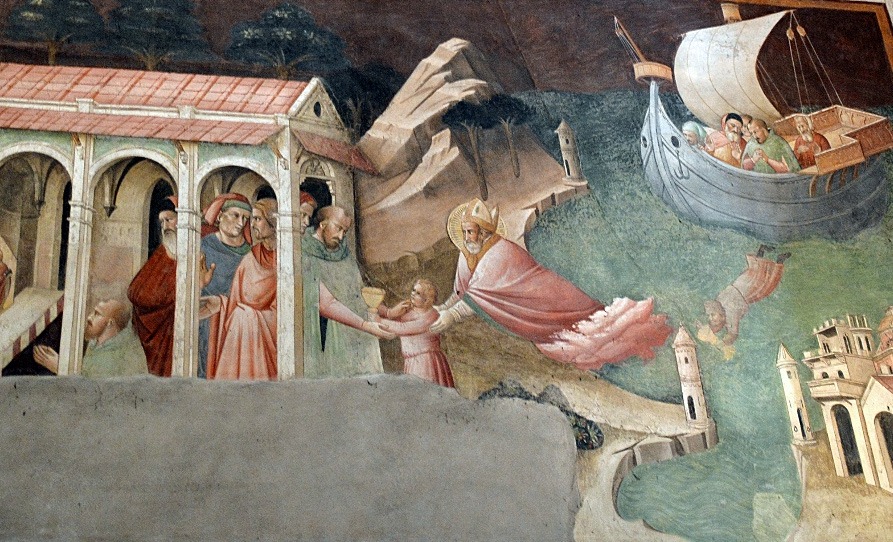
The three little boys
Three young children had gone to work in the fields. En route, they knocked on a stranger’s door. Unfortunately for them, the owner of the house was a butcher who killed them, cut them into pieces and placed them in a salting tub. Fortunately, Saint Nicolas later came to the door, uncovered the terrible deed and ressuscitated the three young boys.

How Saint NicHolas became father christmas
There are several reasons. Because of his miracles, he was associaited with children and presents. The custom of giving presents to well-behaved chidren on 6 December, feast day of saint Nicolas, became popular, particularly in the Netherlands. Sinter Klaas travelled to the United states with Dutch immigrants and eventually became Santa Claus, now known worldwide and linked with Christmas festivities which , for many, have little religious significance!
But where on earth is saint Nicolas nowadays?
He is no longer in Myra. Relics were very important in the Middle Ages and any town that could boast of possessing the relics of an apostle or a saint gained a lot of prestige … and money generated by pilgrims! Typical examples are the tomb of Saint James in Compostela and the relics of Saint Mark brought to Venice from Alexandria.
One particular threat to the fate of these relics was the advent of Islam as many of these precious remains were in lands conquered by Muslims. This is why men from Bari, in southern Italy, decided to retrieve the relics of Saint Nicholas as Anatolia was under Seljuk domination. In 1087, probably at the instigation of the Norman king, Roger II who had just wrestled the area from the Byzantines, three ships with over 60 men on board set off for Myra. Once there, they broke open the tomb and took away the remains. They returned to Bari where a basilica was built to house the relics.

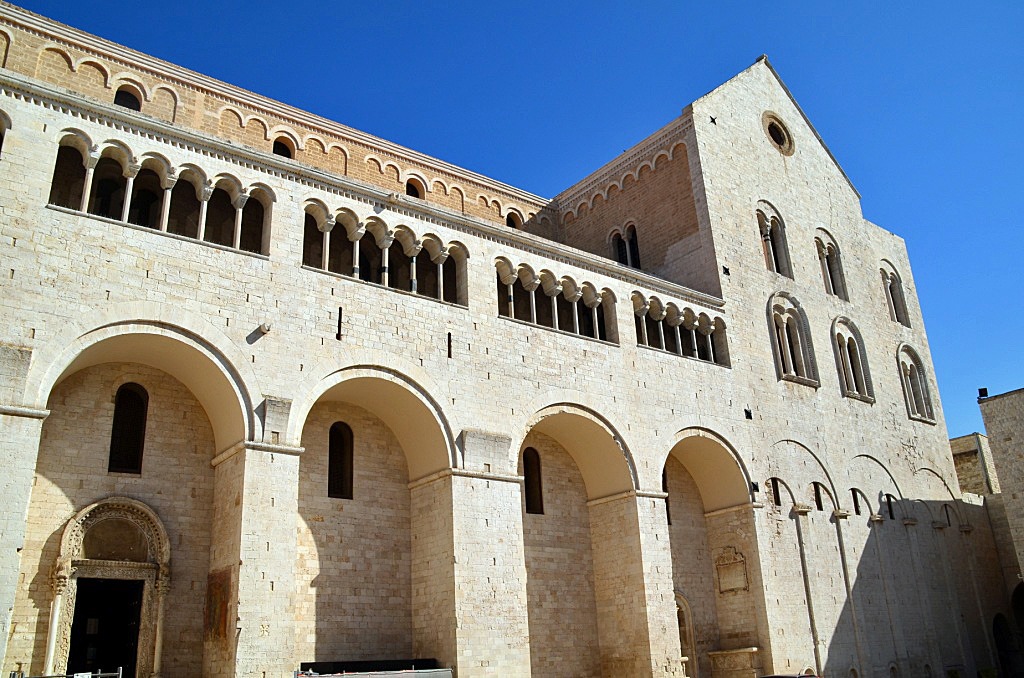



The cult of Saint Nicholas in Bari is particularly important as the bone secrete a liquid, called manna, which is credited with miraculous powers. He is not the only saint concerned with this phenomenon: In Amalfi, the same happens with the relics of Saint Andrew.
Every year, in Bari, a special ceremony is organised to collect the manna. You can find videos on the internet if you are interested.
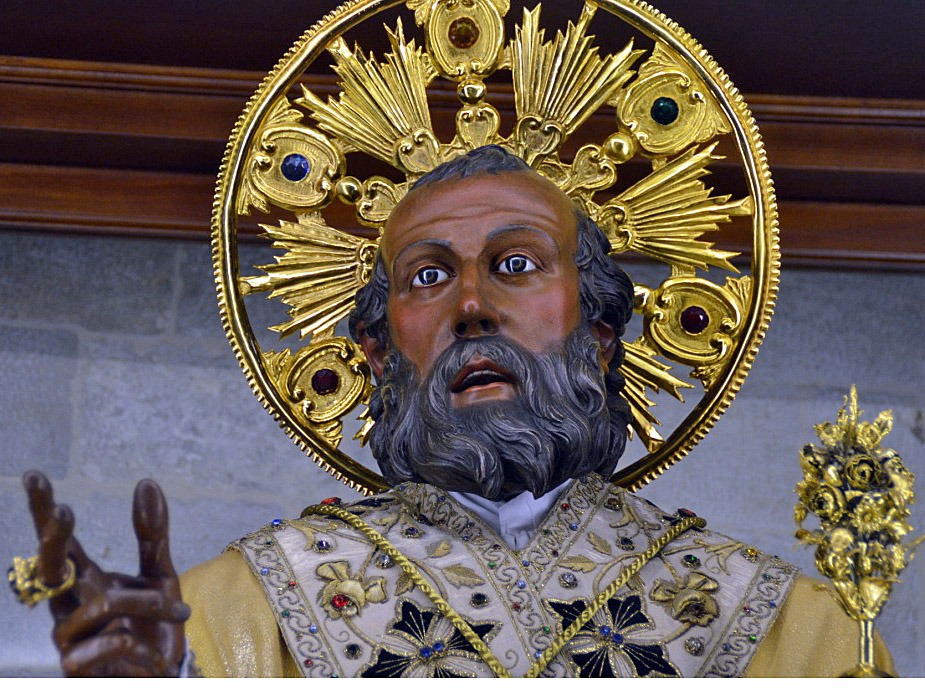
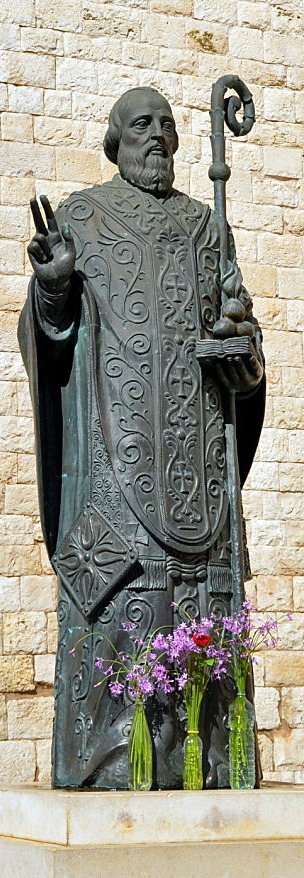
The problem is that Bari is not the only place claiming to hold the relics of the saint. In Venice, on the Lido, there is a church dedicated to Saint Nicholas, which is said to hold the remains of the saint. How can this be?


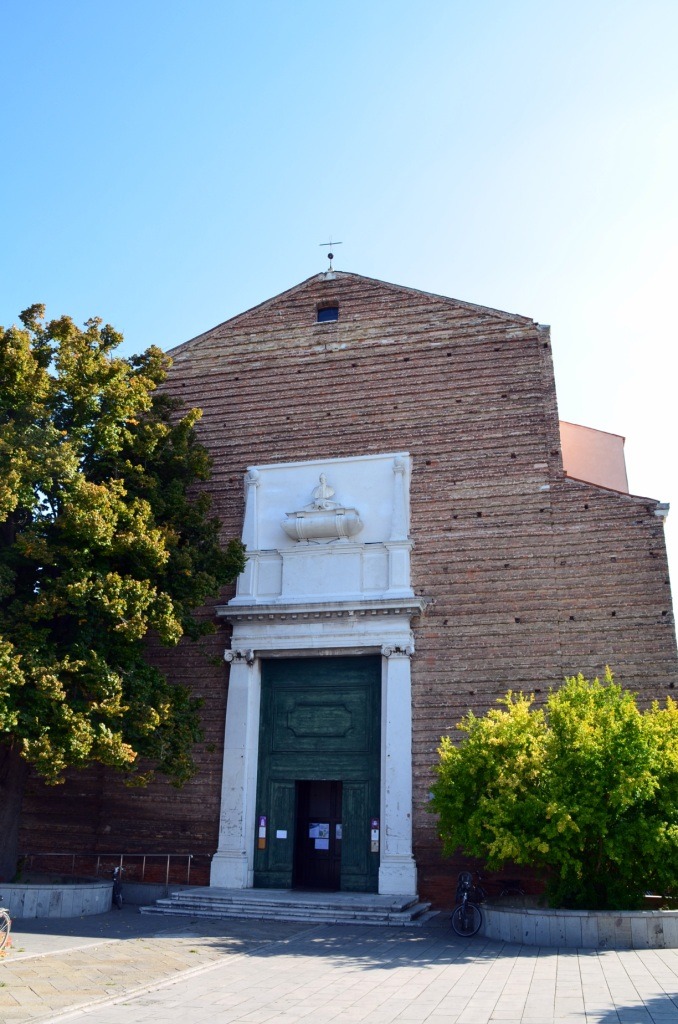
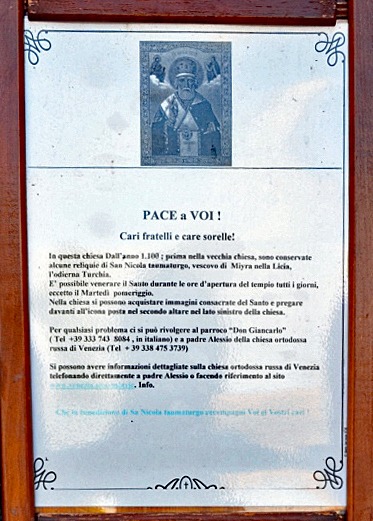
Unfortunately, I was not able to visit the inside of the church as there was a service on when I went there. But, on the front door, there were two signs, one in Italian and one in Russian about the saint. It is interesting to note that Saint Nicholas is venerated both by Catholic and Orthodox Christians.
It is thought that the Venitians also tried to take the relics from Myra …but they got there too late, the Italians had already been! However it is likely that the men from Bari were disturbed and could not take all the bones as the inhabitants of Myra did not want their saint to go away and started chasing them! As they rushed, some of the bones were probably left inside the tomb and taken by the Venetians at a later stage.
This is not the end of the story. The museum in Antalya, not far from Myra, also claims to hold some relics of the saint. They are displayed in the Byzantine section of the museum, together with a couple of icons.
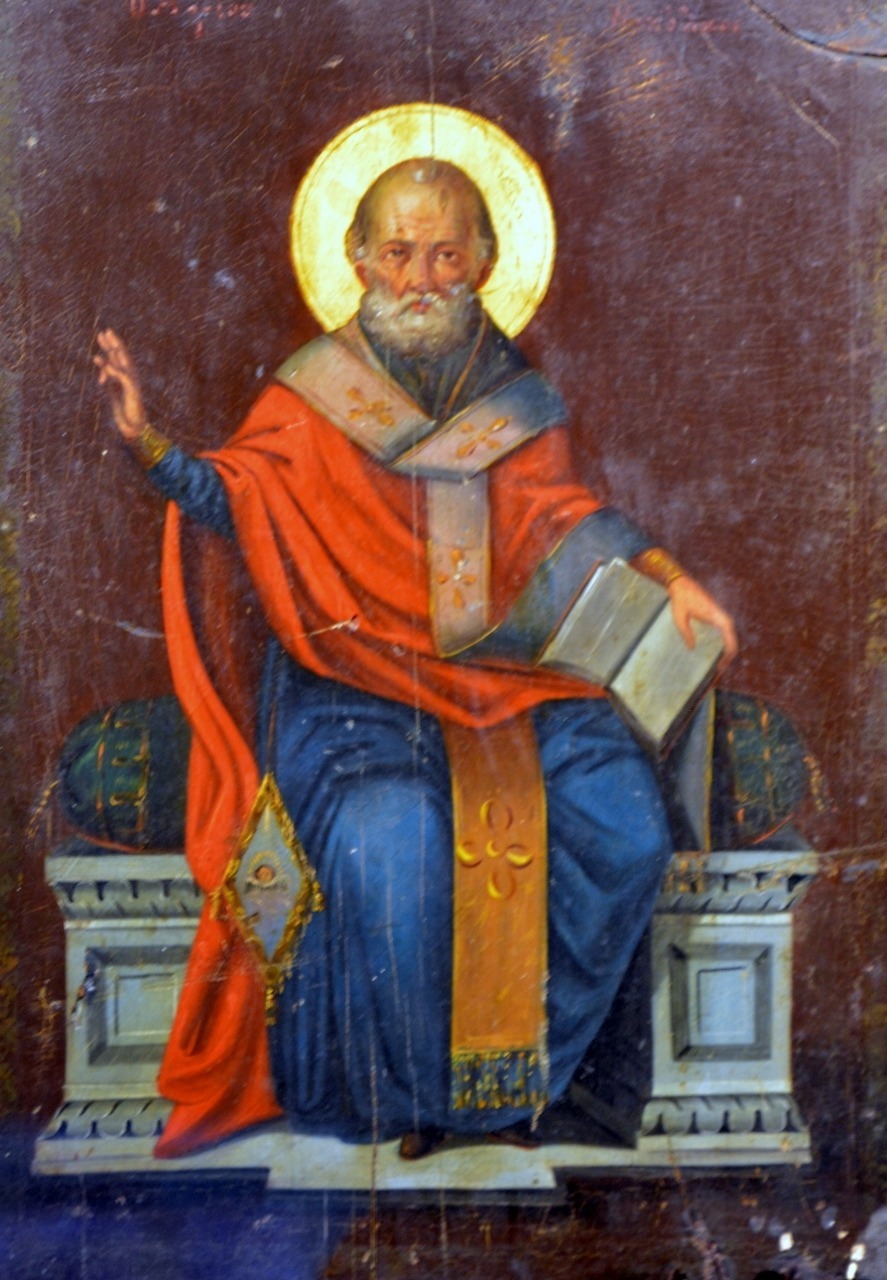

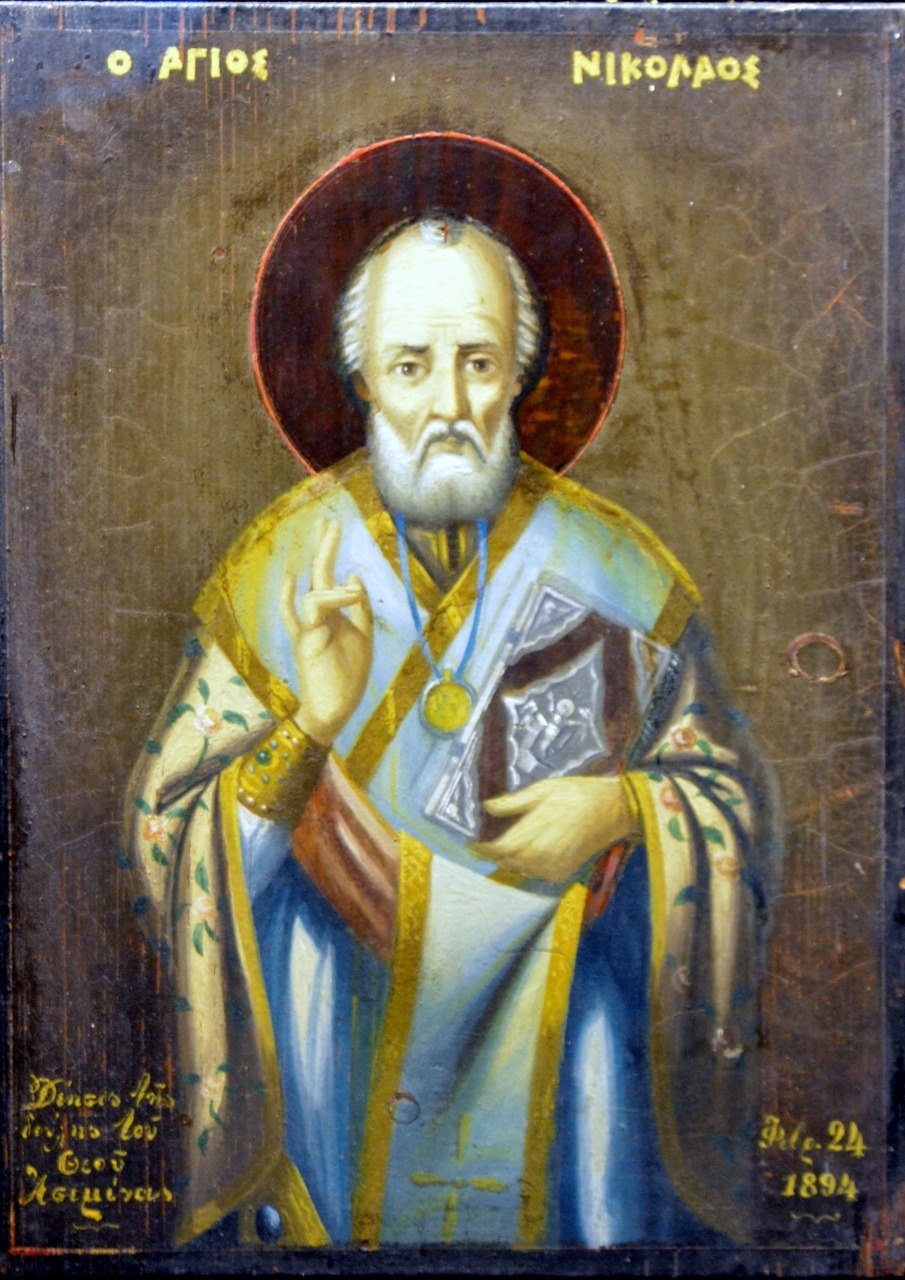
The relics in the museum are probably not genuine: DNA tests have proved that the bones are much more recent than the 4th century and belonged to a younger man than Nicholas who died in his 70s. However, DNA tests on the bones in Bari and Venice show that they belong to an older man who lived at the correct time. The bones all belong to the same individual, which would tend to confirm the theory that the Venitians took what was left behind by the men from Bari!
But nothing is certain! During the restoration in 2020, a tomb was found under the level of the church built in 520 (see video below). Is it the tomb of Saint Nicolas? Anyway, the list of places which are known to hold some of his relics is impressive: you can consult it on an English language site entirely devoted to the saint. Who is St. Nicholas? ::: St. Nicholas Center (stnicholascenter.org). Happy reading!
